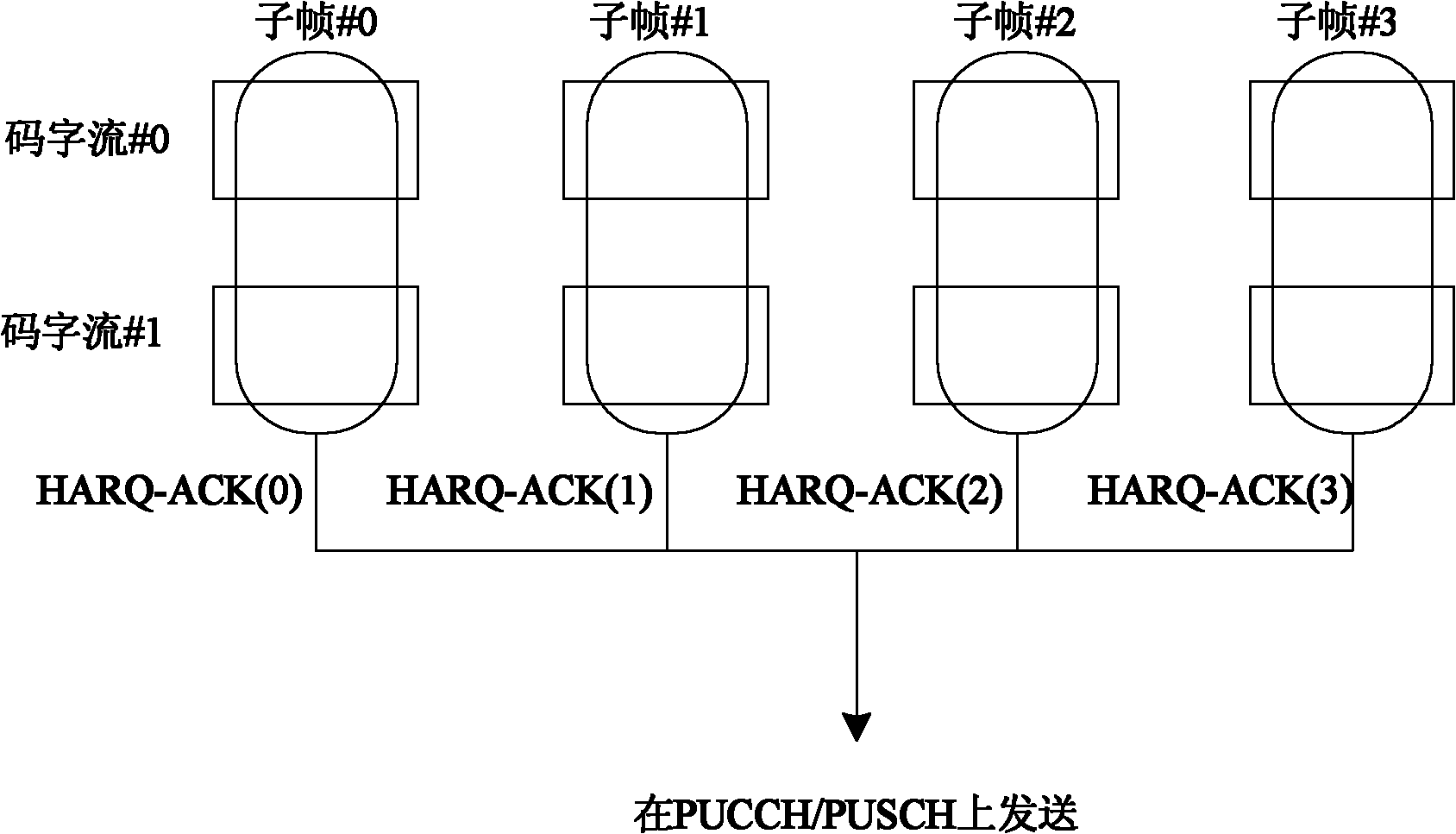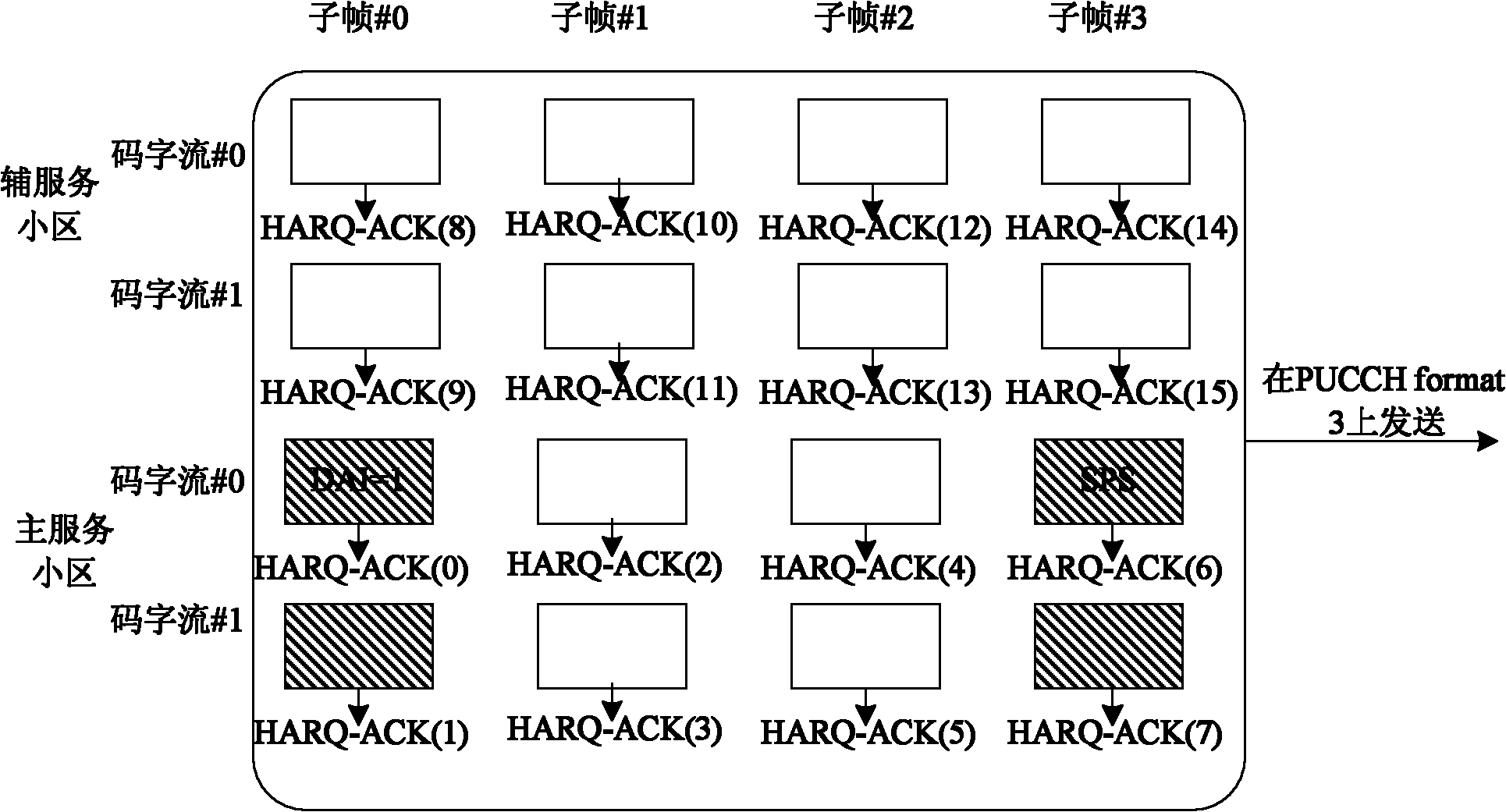Method and system for sending acknowledgement character message in time division duplex system
A time-division duplex system and a technology for answering messages, applied in the field of communication, can solve problems such as no corresponding solutions, and achieve the effect of simple implementation and strong applicability
- Summary
- Abstract
- Description
- Claims
- Application Information
AI Technical Summary
Problems solved by technology
Method used
Image
Examples
application example 1
[0118] Such as image 3 As shown, the base station configures two serving cells for a terminal: a primary serving cell and a secondary serving cell, and configures the terminal to use PUCCH format 3 to feed back HARQ-ACK response messages.
[0119] Assume that within a certain binding window, the terminal only receives a PDSCH without a PDCCH from the primary serving cell and a PDSCH corresponding to a PDCCH with a DAI value equal to 1, and assume that the TPC value on the PDCCH with a DAI value equal to 1 is "01 ".
[0120] It is assumed that the corresponding relationship between the value of ARI and the resource of PUCCH format 3 is shown in Table 1.
[0121] Table 1 Correspondence table between ARI values and resources of PUCCH format 3
[0122]
[0123]
[0124]When the terminal uses the above method 1-1 to feed back the HARQ-ACK response message, in method 1-1, the TPC of the PDCCH whose DAI value is equal to 1 will be reused as ARI, that is, the terminal The ...
application example 2
[0126] Such as Figure 4 As shown, the base station configures a primary serving cell for a certain terminal, and configures the terminal to use PUCCH format 3 to feed back a HARQ-ACK response message.
[0127] Assume that within a certain binding window, the terminal only receives a PDSCH without a PDCCH from the primary serving cell and a PDSCH corresponding to a PDCCH with a DAI value equal to 1, and assume that the TPC value on the PDCCH with a DAI value equal to 1 is "01 ".
[0128] It is assumed that the corresponding relationship between the value of ARI and the resource of PUCCH format 3 is shown in Table 1.
[0129] When the terminal uses the above method 1-1 to feed back the HARQ-ACK response message, in method 1-1, the TPC of the PDCCH whose DAI value is equal to 1 will be reused as ARI, that is, the terminal The TPC corresponding to the PDCCH and the PUCCH format 3 resources configured by the higher layer determine the PUCCH format 3 resources. It can be seen fr...
application example 3
[0133] The base station configures a terminal to use PUCCH format 3 to feed back a HARQ-ACK response message.
[0134] Assume that within a certain binding window, the terminal only receives a PDSCH without a PDCCH and a PDCCH with a DAI value equal to 1 from the primary serving cell, and the corresponding relationship between the value of ARI and the resource of PUCCH format 3 is shown in Table 1.
[0135] When the terminal uses the above method 1-2 to feed back the HARQ-ACK response message, the terminal determines the PUCCH format 3 resource according to the default ARI value and the PUCCH format 3 resource configured by the upper layer. Assuming that the default ARI value is "00", then According to Table 1, it can be seen that the terminal will use the PUCCH format 3 resource configured by the first higher layer to feed back the corresponding HARQ-ACK response message on the PUCCH format 3.
[0136] Considering that the terminal may have DTX (Discontinuous Transmission, di...
PUM
 Login to View More
Login to View More Abstract
Description
Claims
Application Information
 Login to View More
Login to View More - R&D
- Intellectual Property
- Life Sciences
- Materials
- Tech Scout
- Unparalleled Data Quality
- Higher Quality Content
- 60% Fewer Hallucinations
Browse by: Latest US Patents, China's latest patents, Technical Efficacy Thesaurus, Application Domain, Technology Topic, Popular Technical Reports.
© 2025 PatSnap. All rights reserved.Legal|Privacy policy|Modern Slavery Act Transparency Statement|Sitemap|About US| Contact US: help@patsnap.com



